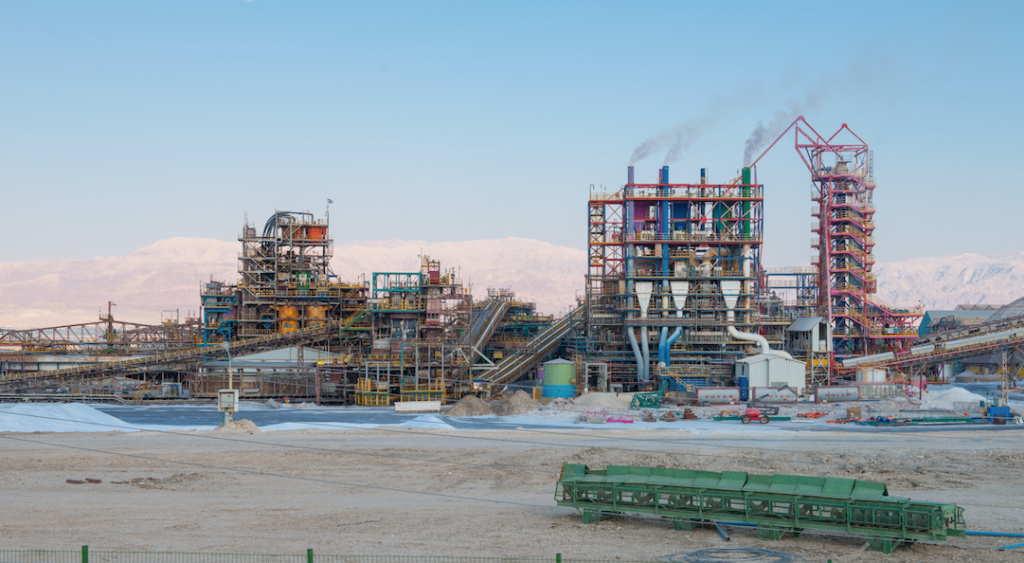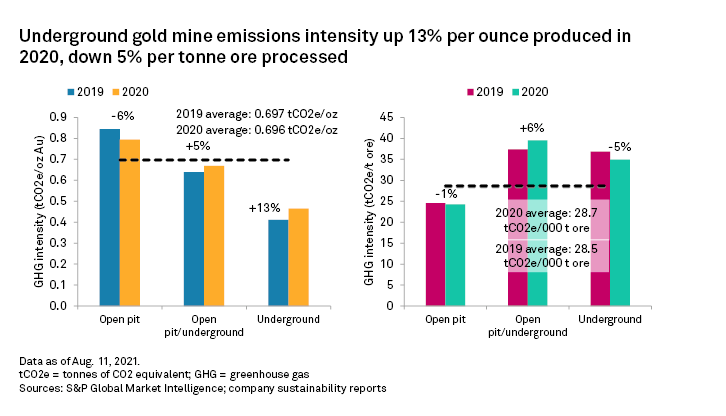MINING.com Editor | August 20, 2021

Stock image.
A new Metal and Mining research report on greenhouse gas emissions in gold mines by S&P Global Market Intelligence reviewed 2020 sustainability reports from more than 90 leading gold mines globally to conduct a year-over-year comparison of greenhouse gas emissions to see the impact of lockdown on emissions.

The report looks at the year-over year comparison of emissions. Mining grades declined in 2020, but despite some fluctuations in actual emissions, that drop in grade led to a drop in gold output, which caused a drop in per-ounce emissions intensity, says S&P.
In 2020, gold output was down 5% globally compared with 2019, largely due to lockdowns imposed to curb the covid-19 pandemic. The combined output from primary gold mines that accounted for around 35% of global supply in 2020 fell just over 1% from 2019 production, the report reads.
Throughput from these mines also fell around 1%, from 847 million tonnes of ore processed in 2019 to 840 Mt in 2020, S&P reports. Meanwhile, emissions from these operations increased less than 1%, from 27.7 million tonnes of CO2 equivalent, or tCO2e, in 2019 to 27.6 MtCO2e in 2020.
Emissions intensity averaged 0.697 tCO2e per ounce of gold produced, the report reads, a negligible decrease year over year. On a per tonne of throughput basis, emissions intensity increased incrementally, up less than 1% to 28.7 tCO2e per thousand tonnes of ore processed.

Negligible change in emissions, divided by less gold gives a bigger value in tCO2e/oz. Supporting that somewhat more-stable nature of open pits, grade didn’t change by much at open pit mines. Underground mines’ per-ounce intensity increased by 13% but declined at open pits, the report finds. Generally, per-tonne emissions intensity remained stable overall.
Lockdowns did occur in a number of regions in 2020 but overall they didn’t cause much change in terms of emissions intensity of a project.
“A period of lockdown might have caused a drop in output, but the emissions are coming from operating the mines. During the lockdown, the equipment and the mills were shut down, therefore the emissions would decline anyway. A drop in emissions divided by a lower output (or throughput for that matter) can just as easily yield the same emissions intensity,” says S&P.
Analysis of 2019 data from 96 gold mines highlighted clear differences in the emissions intensity across mine types, the report finds, with open pit mines exhibiting a higher intensity on a per ounce of gold produced but a lower intensity on a per tonne of ore processed basis.
No comments:
Post a Comment